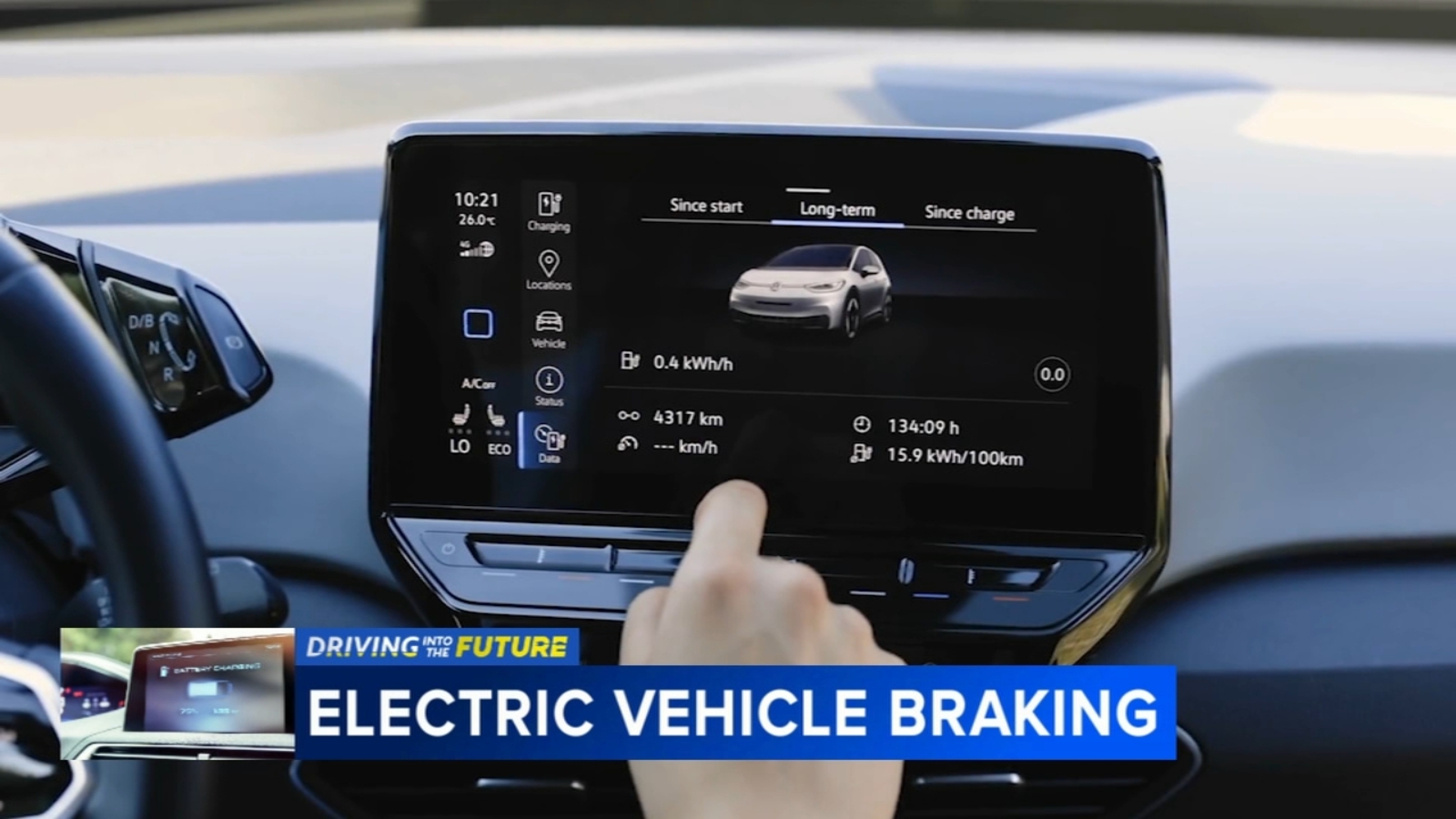Driving into the Future: How regenerative braking in EVs recycles energy while you drive

PHILADELPHIA (WPVI) — When you brake on a normal gas-powered vehicle and the brake pads or shoes put pressure on the rotors, the act creates thermal energy, or simply put, heat.
It’s basically wasted energy.
But, on an EV or hybrid, when you brake, the kinetic energy is captured and transferred to the battery to help recharge it.
MORE | What to know about electric vehicle maintenance before you make purchase
“Basically, you’re putting power back into the battery,” said mechanic Tom Palermo.
Palermo is the owner of Preferred Auto in Northeast Philadelphia, which has been servicing vehicles for over 40 years.
He called regenerative braking one of the great things about electric vehicles.
“Now different vehicles will do it different ways, and there’s lots of arms and legs and algorithms to it. So it’s not a one-size-fits-all thing,” he said.
RELATED | EV owners charged a fee to make up for gas tax revenue in Pennsylvania and New Jersey
And you may have heard the term “one pedal driving,” which is part of regenerative braking.
This is how it works: when a driver takes their foot off the accelerator pedal, the car automatically begins stopping without even hitting the brake.
“Different vehicles will allow you to change settings of how aggressive you want that to be,” said Palermo.
Palermo explained that the capturing of kinetic energy in an EV naturally slows a vehicle down on its own with drag and allows for less use of your brake pads and rotors, which allows them to last longer.
He also said it takes some time to get a feel for it and the different settings a vehicle may have.
Copyright © 2025 WPVI-TV. All Rights Reserved.

